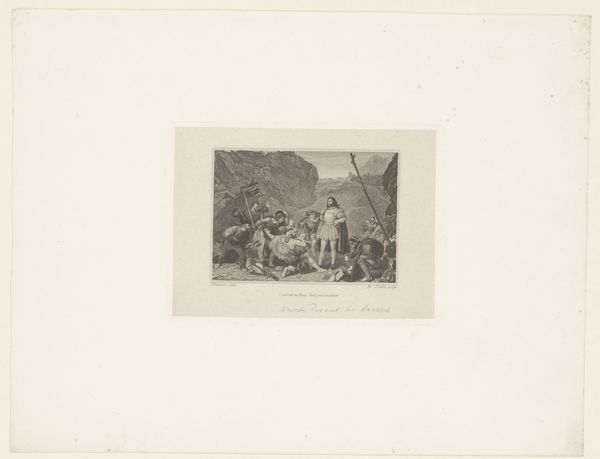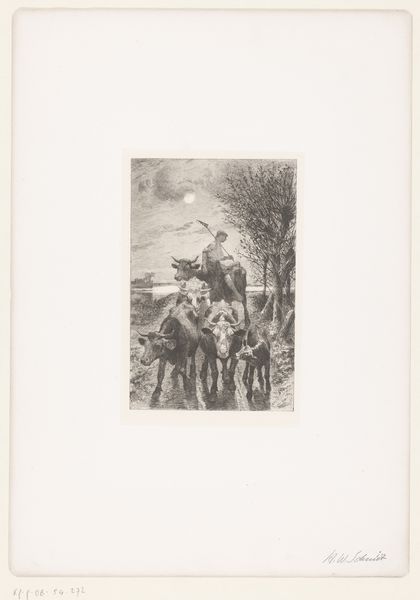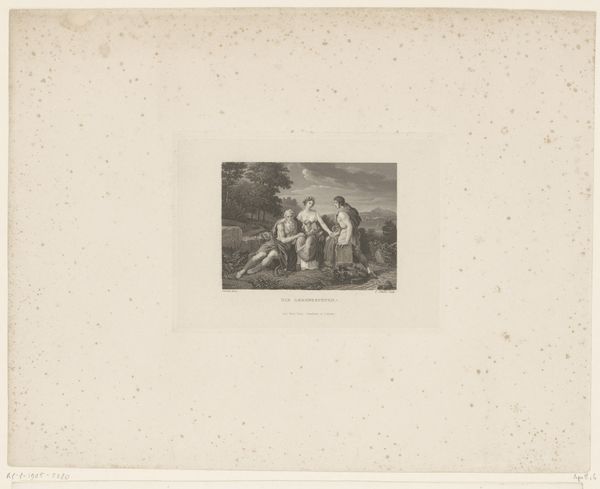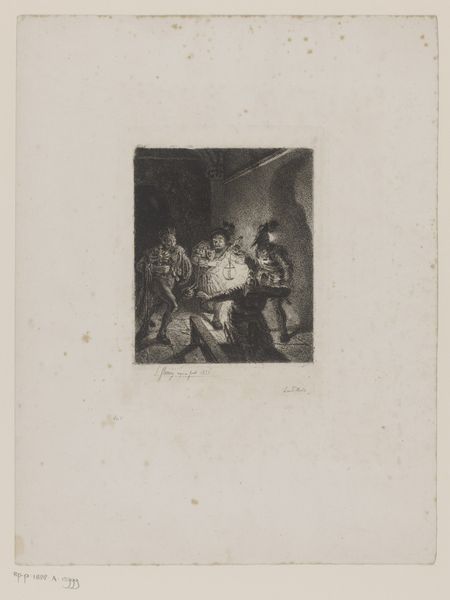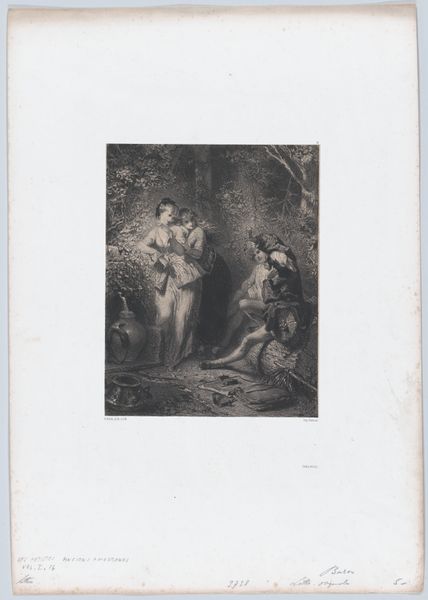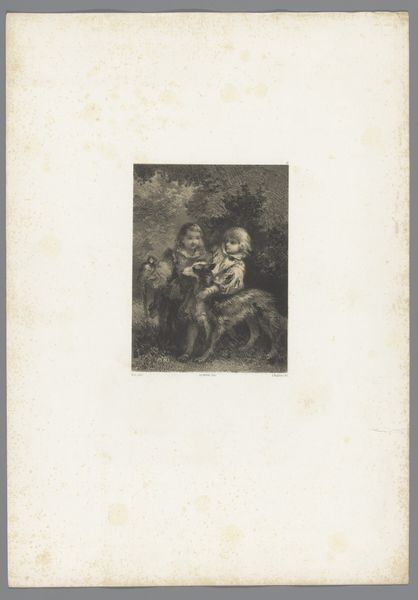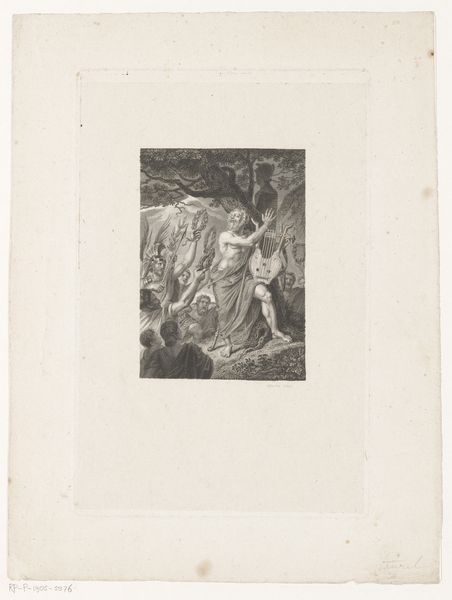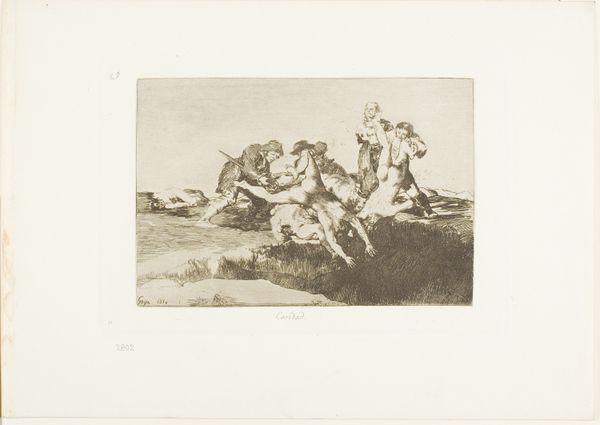
Dimensions: height 250 mm, width 187 mm
Copyright: Rijks Museum: Open Domain
Editor: So, this is *Bacchanten in een bosrijk landschap*, or Bacchants in a Wooded Landscape, made sometime between 1847 and 1889. It’s an etching by William Unger, currently at the Rijksmuseum. It feels like a glimpse into some secret, perhaps forbidden world. What catches your eye in this piece? Curator: Immediately, I'm drawn to the Bacchanalia depicted—the figures reveling. Unger revives an ancient symbol: ecstatic liberation. What’s interesting is the deliberate use of shadow. Doesn't it suggest that freedom often exists just beyond the veil of accepted societal norms? Editor: That’s a great point. The shadows do add an element of mystery and hint at something hidden. So the Bacchants, followers of Bacchus, they represent a kind of freedom, a rejection of rules? Curator: Precisely! Bacchus, or Dionysus, isn't merely a god of wine. He is the embodiment of untamed nature, emotional excess, and the subversion of order. And here, in this forest landscape, look at how Unger uses line and form. What feeling does that give you? Editor: The swirling lines, especially in the figures’ clothing, do give a sense of wildness and freedom. The artist really captures that. But is it a freedom that is celebrated or condemned? Curator: Ah, that is the crucial question! Consider the tradition. The Bacchanalia were often viewed with suspicion. Early Rome tried to suppress them due to the orgiastic rites celebrated within. Does that impact how you see the imagery represented by Unger? Editor: Yes, knowing that context casts a new light. Maybe it is a little bit of both—a celebration, but one tinged with a bit of danger and societal disapproval. Curator: Exactly. Unger has captured something eternal here – the push and pull between order and chaos, control and freedom. A pertinent theme that reverberates even today. Editor: I'll certainly look at this kind of art differently, understanding all the levels and associations involved. Thanks for helping me connect the image to its deeper meanings!
Comments
No comments
Be the first to comment and join the conversation on the ultimate creative platform.
